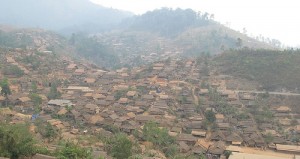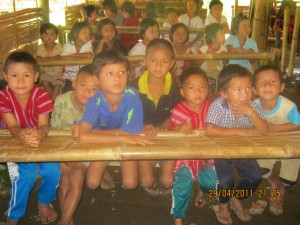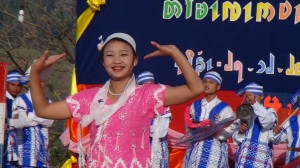During this time, and especially since the early 1980s, ethnic people sought refuge in the jungles as internally placed people or across the border in Thailand. Populations fluctuate as new refugees arrive and others are given resettlement options in third countries, but an estimated 150,000 Burmese refugees live in these seven camps today, with nearly half of them from the Karen ethnic group.

Karen refugees camp in Thai-Border
These are some of the longest running refugee camps in the world, second only to those in Palestine. Thailand does not officially recognize refugees (It is not signatory to the 1951 UN convention), so refugees in the Thai camps do not have freedom of mobility or opportunities for work or higher education.

IDP student in Karen state area
Life in the camps is quite boring and recent opportunities for resettlement to third countries (such as Australia, Canada, and the US) have tempted many Karen and Burmese refugees to leave the camps to try for new lives away from both the conflict and their traditional communities.
Meanwhile across the river in Burma, an estimated 450,000 Internally Displaced Persons remain in hiding (again perhaps half of them Karen), having fled attacks on their villages by the Burmese military, but afraid or unable to cross the border into Thailand. These IDPs are incredibly vulnerable, both to human rights violations (rape and forced labor by the military, destruction of crops and property, a high risk of landmine injuries) as well as malnutrition and disease brought on by a life lived hiding in the jungle to avoid the conflict.





